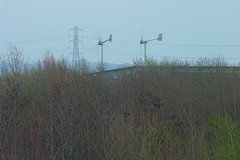Out of the Ordinary-Alternative Energy Sources
Alternative energy is often referred to as energy from a source other than the conventional fossil fuel source like oil, natural gas and coal. Alternative energy is not popularly used and is usually environmentally sound. It is also often times renewable energy. Several alternative energy sources are solar, wind, biomass, wave and tidal energy.
Population problem is not only a problem or concern about the number of people. People consume food, fresh water, wood, minerals, and energy every day. The increasing energy consumption is leading to the depletion of conventional energy sources as well as increasing pollution.
We are currently reliant on fossil fuel and other non-renewable energy. This causes great harm to out environment and will also tremendously affect future generations. Most of the current population relies on non-renewable energy source such as oil, natural gas, fossil fuel and coal.
Fossil fuels are non-renewable source of energy, it means it could run out. Also, when fossil fuels are burnt they produce the gas carbon dioxide (CO2). Carbon dioxide is known as a greenhouse gas since it traps heat from the sun and preventing it from escaping out of the Earth’s atmosphere into space. The amount of greenhouse gasses in the atmosphere is increasing. It leads to rising Earth temperature called global warming.
Alternative and renewable source of energy is therefore a necessity. Renewable energy is derived from resources that are regenerative or regenerate after consumption. For this reason, renewable energy unlike fossil fuels do not produce as many greenhouse gases.
There are several countries that are providing incentives for private sector or personal efforts to use renewable energy by giving tax incentives and subsidies. Currently, just 14 percent of the world’s energy consumption comes from renewable energy sources. But there is great potential for alternative energy. It could be large enough to cover many times the current energy consumption.
Several sources of renewable or also called alternative energy are sunlight, wind, rain, tides and geothermal heat. Wind energy comes from wind power that is generated from wind turbines. Wind energy are non-polluting energy source with low maintenance cost although the initial expense may be high.
Solar energy come from the sun’s rays that reach the Earth. Solar energy can be converted into heat and electricity. Solar energy can be converted to thermal or energy generated from heat. It can be used to heat water and heat spaces like inside greenhouses, homes and other buildings.
Biomass energy comes from plants and animal material that are usable source of energy like wood from trees, waste from other plants, manure or animal wastes. Biomass energy has numerous benefits. It uses waste materials that are usually dumped and uses up methane gas (a greenhouse gas). Fuels like ethanol can be made from biomass and uses as an alternative to petrol.
Meanwhile, hydropower makes use of the energy the water gains when it drops in elevation. That is why hydropower plants are near waterfalls or dams. Hydropower has been used since the start of the electric age but unfortunately the value of this energy has not yet been developed and maximized.
Another alternative energy source would be geothermal energy or energy derived from the underwater heat the world is emitting. Geothermal power plants are unaffected of changing weather conditions. It is also price competitive and helps the people’s reliance on fossil fuels lessen.
These only show that we can choose alternative ways on using energy to lessesn its negative impact on our environment. Alternative energy sources provide us a choice for a bright and healthy future. It may something be out of the ordinary but it can also be useful.
Find More Alternative Energy Articles

